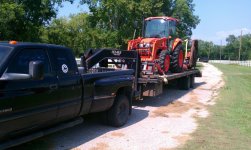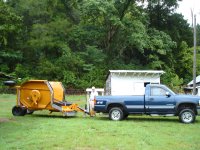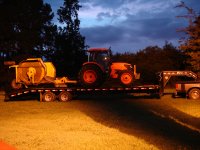I apologize to any who have heard me say this before, but it's my latest soapbox, and I aim to make sure everybody possible is educated. Ahem...
I was recently very surprised to learn that my truck required a weight-distributing system to achieve its maximum receiver weight rating. Without a WD system, my truck's receiver is only rated for 3500# gross trailer weight / 350 lbs tongue weight. With a WD system, it goes up to 12k# GTW / 1.2k# TW. In another thread on TBN, I learned that this rating is relatively conservative, and many receivers on the road today are good for up to 5000# / 500# without a WD system. Newer trucks are sometimes even better specced and can do 10k / 1k. I have looked on etrailer.com, and the biggest I have ever seen is one rated for 15k# / 1.5k# without a WD system.
The moral of the story, though, is that you may be very surprised to learn that your big, powerful truck's towing ability is being hamstrung by the fact that you don't have a WD system. If you're like me, you saw that 12k tow rating and assumed that the factory hitch was good to go. Why wouldn't it be? They say the dang truck can tow 12k? But there is this little asterisk and little text down at the bottom of the page that says, "Oh yeah. If you don't have a WD system, you can only tow this much smaller number," and if you miss that, you could end up in a world of pain.
My impression, from my limited research, is that many factory receivers today are rated between 500-1000 lbs tongue weight without a WD system. That drop forged ball mount you bought is rated for 10k# gross trailer weight. It is almost certainly rated for 1000 lbs tongue weight. So if what an earlier commenter said about a batwing having 1500 lbs or more on the tongue is true, you may not have the specs to do it.
I'm not trying to sow fear and discontent. I just hate to think of people exceeding their towing system's capacities without knowing it, and getting themselves into trouble.


